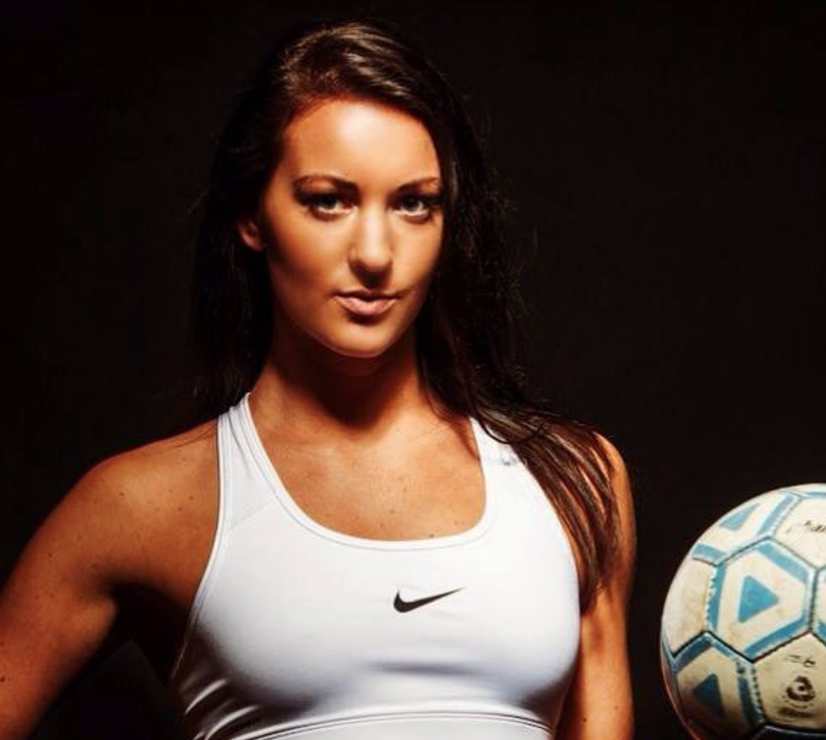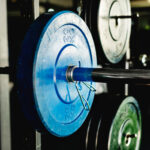What Youth Athletes Need To Get Better
Today’s guest post comes courtesy of strength coach Erica Suter. She discusses a topic that sometimes makes me want to throw my face into an ax: youth athletes and how they should train.
FYI: I agree with everything she says in this post. It’s excellent.
Full Disclosure: I’m an 80’s baby who suffers from childhood nostalgia.
We moved. We played. We frolicked. We skipped. We sprinted.
Gone are the days when we played Capture the Flag, dodgeball, and Hide n’ Seek with our neighbors. And gone are days when we played tether ball at recess, or drew lines of chalk into a four square ball game on our driveways.

Copyright: nadezhda1906 / 123RF Stock Photo
Oh, and how about Hopskotch?
Such. A. Throwback.
If this is happening still, however, hit me up. I’d love to come out to your neighborhood. I’ll be sure to bring my Oshkosh B Gosh overalls too. ;-O
All the memories I reminisce on “back in the day” happened because the times we lived in promoted getting outside, running around, and actually meeting up with friends.
In person.
We called their home landlines and left a voicemail for a play date. And we’d meet on the playground.
Nowadays, we send a convenient text, only to find out our friends would rather stay in playing FIFA and not see us in real life.
To that end, youth activity has gone down to some degree. Whether that is in school or at home, kids aren’t moving as much as they could or should.
I wrote this post because I truly believe strength and conditioning coaches and team coaches have the opportunity to teach kids to move freely and safely again, in the gym, on the field, and at home.
So what do our youth athletes need? Let’s dive right in:
1) Coordination Drills
It’s amazing the lack of coordination I’ll see from kids these days.
As an example, most new athletes who come into our facility are introduced to basic drills, such as skipping, back pedaling, and marching. Most of the time, I will see ipsilateral (same arm, same leg) movement patterns, and then I’ll hear them say something like, “that felt awkward.”
If skipping, running, shuffling, or back pedaling feels awkward, then it’s being done wrong.
Simple movements like these should feel smooth and natural.
Nailing down contralateral patterns early on (ages 8-12) ensures kids are set up for smooth and efficient running mechanics when they get to middle and high school.
Just like acquiring skills with a soccer ball, it’s never too early to teach kids key cognitive skills to improve coordination before it’s too late.
Ladder drills could be a good start, but they’re useless if kids just tap their feet and ignore opposite arm, opposite leg action. Don’t be lazy. Do them with precision and arm movement:
Please keep in mind though: Ladders will not develop maximal speed.
I like to use them as a movement prep warm up or as a fun introduction. Every time I whip out a ladder kids get excited, so it does have its time and place. The world will not go up in flames if you do ladder drills for 5-10 minutes, but don’t make them the entire workout.
Other options to start beginners with could be marching, lateral marching, skipping, and crawling:
2) Strength Training
Strength can be an intimidating component in the youth training world. What most parents envision is their child getting under a barbell, signing up for a CrossFit class, and getting injured.
Rest assured, strength training doesn’t have to mean lifting weights. Let’s teach them to crawl, carry, squat, hinge, pull, push, or hollow hold with core tension and proper belly breathing.
These are all bodyweight movements that can eventually be progressed when ready.
Strength coach Justin Ochoa wrote an excellent article on this HERE.
Since neurological factors play the biggest role in a young athletes’ development, they have to learn to move their bodies first. So you’re better off focusing on form rather than load.
Sure, an 8 year old attached to a weighted sled with an altitude mask may get Instagram likes, but is it effective?
Moreover, is it SAFE?
Note From TG: What’s next…parachute jumping jacks? Bounding over a live volcano?
Needless to say, starting simple goes a long way. If kids master motor patterns young, then once they move into high school, they’ll be the strong badass in the weight room. At this age (14-18), hormonal factors are now the major influencers for muscle hypertrophy.
Now, they’ll be better prepared to gain strength and lift heavier loads:
To this day, Brenna in the video above still crawls, squats, and lunges with bodyweight (as warm up) because it hones in on inter-muscular coordination and allows the body to work as a unit.
The coordination and basics never stop.
3) Proper Landing Mechanics
Hopping, jumping, bounding, and a plethora of other power exercises that involve landing are very popular with youth athletes.
But more often than not, these are butchered.
Secret: No one cares if your kids can jump a 36” box. And no one cares if you can do this:

Photo Credit: Athletes Acceleration
If your goals are slouched posture, inhibited core and glutes, or dying, then sure, have them give this a go.
I can’t reiterate enough how critical it is to hammer home safe and proper landing mechanics. So please: lower the height of the box, check your ego, and care for your youth athletes.
Here is a video that talks about proper countermovement and landing technique (which should look the same):
4) Variety
Since we want to ensure our kids are learning as many motor patterns as possible, periodization that reflects a more concurrent style would be best. This way, they’re learning a variety of exercises such as how to squat, hinge, crawl, push, pull, and lunge.
Additionally, they will be doing strength, agility, endurance, and power drills in all planes of motion.
A multi-faceted approach allows kids to learn technique, work multiple muscle groups, evade boredom, and stay excited about performance training without burning out. It’s similar to the early specialization argument when kids should not choose one sport before age 12. The same goes for the gym.
At our facility, we go as far as designing obstacle courses. Kids will crawl under hurdles, climb up ropes, sprint, or dodge cones for the heck of it.
Whether this is for strength based or skills based exercises, cognition is always a must for this population. Strength coach Jeremy Frisch does some cool things with youth athletes to the point it looks like an American Ninja Warrior episode.
Go check him out HERE.
If you have any fun ideas on how you train your youth athletes, or other components you feel are necessary, I would love to hear. My favorite part about working with this population is the sky is the limit in terms of programming, and we as coaches have wiggle room to get creative.
About the Author
 blogger who has worked with athletes and non-athletes for over 5 years. She is currently a strength coach at JDyer Strength and Conditioning, and also runs her own technical soccer training business in Baltimore, MD. Her interests include writing, snowboarding, and reciting Lord of the Rings quotes to her athletes and clients.
blogger who has worked with athletes and non-athletes for over 5 years. She is currently a strength coach at JDyer Strength and Conditioning, and also runs her own technical soccer training business in Baltimore, MD. Her interests include writing, snowboarding, and reciting Lord of the Rings quotes to her athletes and clients.


Comments for This Entry
Stephen Gurtowski
This is a terrific article. I especially appreciate the part about proper landing mechanics. Nice job!November 18, 2017 at 4:41 am |
Erica Kristin
Thanks!November 20, 2017 at 10:44 am |